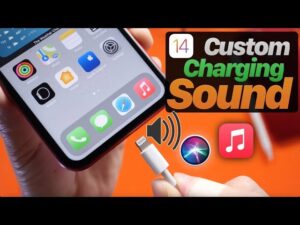Looking to charge your car battery but unsure how long to leave the battery charger on? You’ve come to the right place! The answer may vary depending on various factors, such as the charger’s specifications, the battery’s current state, and your charging goals. In this article, we will delve into the ideal charging times and offer valuable insights to ensure you get the most out of your battery charger. So, if you’re wondering how long to leave the battery charger on your car, keep reading for expert advice and practical tips to keep your car running smoothly.
How Long to Leave Battery Charger on Car
The Importance of Maintaining a Healthy Car Battery
Your car battery is a vital component of your vehicle’s electrical system. It provides the necessary power to start the engine, operate the lights and accessories, and support other electronic systems. A healthy car battery ensures reliable performance and prevents unexpected breakdowns. However, batteries can lose their charge over time due to various factors, such as age, weather conditions, and extended periods of inactivity.
One effective way to maintain a healthy car battery is by using a battery charger. A battery charger helps replenish the charge of your battery, prolonging its life and ensuring optimal performance. But how long should you leave a battery charger connected to your car? Let’s explore the different factors to consider.
Factors Affecting Charging Time
The charging time required for your car battery depends on several factors. Understanding these factors will help you determine the appropriate duration to leave the battery charger connected.
Battery Size and Capacity
The size and capacity of your car battery play a significant role in determining the charging time. Larger batteries with a higher capacity take longer to charge compared to smaller ones. A battery charger’s output also affects the charging time, as higher output chargers can charge batteries faster.
Battery State of Charge
The current state of charge of your battery influences the charging time as well. If your battery is nearly fully discharged, it will take longer to charge compared to a battery with a partial discharge. It’s important to note that deeply discharged batteries may require special charging procedures to recover.
Charger Type
Different types of battery chargers are available in the market, each with its own charging characteristics. Some chargers are designed to provide a quick boost of charge, while others are intended for slow and steady charging. Understanding the capabilities of your charger will help you determine the appropriate charging time.
Charging Speed
When it comes to battery chargers, it’s important to strike a balance between charging speed and battery health. While faster charging may seem appealing, it can potentially damage your battery if not done correctly. Slower charging, on the other hand, ensures a safer and more thorough charge. It’s recommended to opt for a charger that offers a gradual and controlled charging process.
Recommended Charging Time
Although the specific charging time for your car battery may vary depending on the factors mentioned above, a general guideline can help you determine an appropriate duration for charging.
Maintenance Charging
If you’re using a battery charger for maintenance purposes, such as during periods of inactivity or to top up a slightly discharged battery, it’s typically recommended to charge for 4 to 8 hours. This duration allows the charger to replenish the charge without overcharging the battery.
Deep Discharge Recovery
In the case of deeply discharged batteries, a different approach is required. Deep discharge occurs when the battery is significantly discharged to the point where it struggles to start the vehicle. To recover a deeply discharged battery, a charger with a recovery mode or a specialized recovery charger is typically recommended. The charging time can range from 12 to 48 hours, depending on the charger and battery capacity.
Trickle Charging
Trickle charging is a low-current charging method that helps maintain the battery’s charge level and prevent self-discharge during long periods of inactivity. Trickle chargers usually provide a low, constant current, allowing you to leave the charger connected for an extended period, typically 48 to 72 hours or longer, without risking overcharging.
Smart Chargers
Smart chargers, also known as intelligent or microprocessor-controlled chargers, are designed to optimize the charging process. These chargers monitor the battery’s condition, adjust the charging voltage and current accordingly, and automatically stop charging when the battery reaches full capacity. The charging time with a smart charger can vary depending on the battery’s state of charge and capacity.
Tips for Safe Battery Charging
Read the Manual
Before connecting a battery charger to your car, it’s essential to read the charger’s manual and understand the manufacturer’s recommendations. Each charger may have unique features and instructions that should be followed for safe and effective charging.
Choose the Right Charger
Ensure that the charger you use is compatible with your car battery. Consider factors such as battery voltage, capacity, and charger output to select the appropriate charger. Using an incompatible charger can damage your battery or pose safety risks.
Positioning and Ventilation
Place the battery charger on a stable surface in a well-ventilated area. Charging batteries can sometimes produce gases, so it’s crucial to have proper airflow to prevent the accumulation of potentially flammable gases.
Disconnecting the Charger
Once the recommended charging time has elapsed or your battery is fully charged, disconnect the charger from both the electrical outlet and the battery terminals. This will prevent overcharging and minimize the risk of electrical hazards.
Regular Battery Maintenance
Using a battery charger periodically for maintenance charging can help extend the life of your car battery. Regularly checking the battery’s health, cleaning the terminals, and ensuring proper electrolyte levels will contribute to better performance and longevity.
Maintaining a healthy car battery is crucial for reliable vehicle operation. Using a battery charger allows you to replenish the battery’s charge and prolong its life. The duration to leave the battery charger connected depends on factors such as battery size, state of charge, charger type, and desired charging speed. Following the recommended charging times and safety tips will ensure a safe and effective charging process.
Remember, properly maintaining your car battery can save you from unexpected breakdowns and costly replacements. By understanding how long to leave a battery charger connected to your car and following best practices, you can keep your battery in top condition and enjoy worry-free driving.
How long can I Leave a Battery Connected to a Charger or Maintainer?
Frequently Asked Questions
How long should I leave a battery charger on my car?
It is recommended to leave a battery charger on your car for at least 8 hours or overnight. This allows enough time for the charger to fully recharge the battery and ensure it reaches its optimal charge level.
Can I leave a battery charger on my car for too long?
Leaving a battery charger on your car for too long can potentially overcharge the battery, which can damage it and reduce its overall lifespan. It is important to follow the manufacturer’s instructions and recommended charging times to avoid overcharging.
What factors can affect the charging time of a car battery?
The charging time of a car battery can be influenced by various factors such as the battery’s capacity, age, level of depletion, and the output power of the charger. Additionally, environmental conditions such as temperature can also impact the charging speed.
How can I determine if my car battery is fully charged?
To determine if your car battery is fully charged, you can use a voltmeter or a battery tester. A fully charged battery typically measures around 12.6 to 12.8 volts. However, it is always recommended to consult your battery charger’s manual for specific instructions on determining the charge level.
Should I disconnect the battery charger after it has finished charging?
Yes, it is generally advised to disconnect the battery charger from your car once it has finished charging. This helps prevent any potential damage caused by overcharging and ensures the battery remains in good condition.
Final Thoughts
Leaving a battery charger on your car for too long can damage the battery or even cause it to overcharge. The ideal charging time for a car battery depends on its size and the charger you’re using. On average, it is recommended to leave a battery charger on a car for about 4-8 hours to fully charge a depleted battery. However, it’s important to regularly check the battery’s progress and avoid leaving it unattended for extended periods. Remember to always refer to the manufacturer’s guidelines for specific charging times and instructions. In summary, when it comes to how long to leave a battery charger on a car, it’s best to follow the recommended charging time provided by the manufacturer to ensure optimal performance and avoid damage to the battery.



